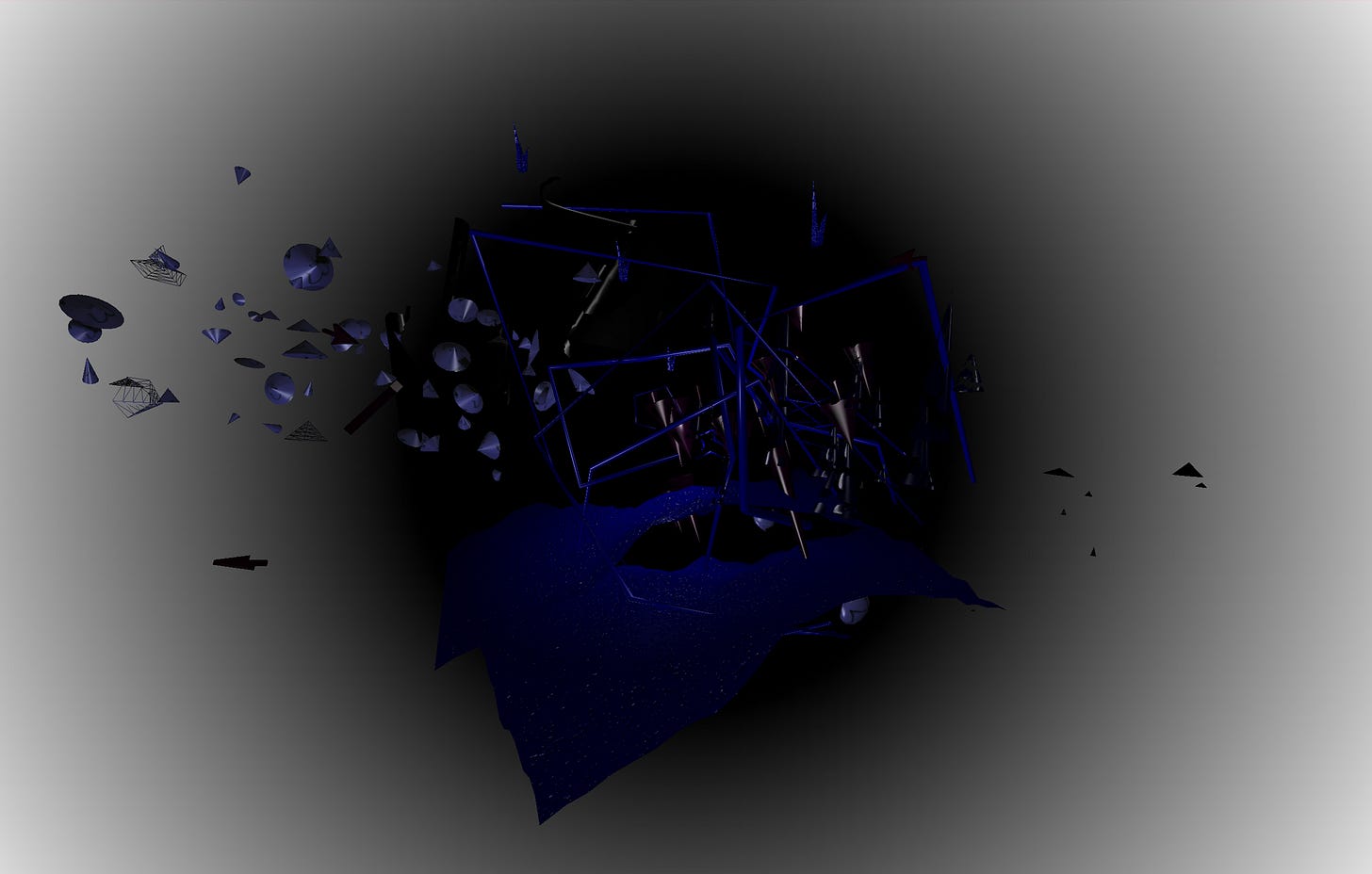Seeing digital objects
We live with digital objects. They could be 3D, 2D, audio or text. Some are static, others interactive. They exist on our screens, in the memory of our devices and across different digital networks. But given their ephemeral nature and contingency on their relations, seeing them clearly isn’t straightforward.
I started writing this a year ago while creating a series of networked 3D artworks, because I wanted to better understand the ‘raw material’ I was working with. I read a number of texts that convinced me art can play an important role in revealing some truth about them.
Digital objects are material. They don’t exist in an alternate universe and it’s not really that helpful to think about them that way, as Jacob Gaboury points out in his book Image Objects.
“But what then is the materiality of digital objects, alienated as they are from the things they seek to simulate?” he asks. “It speaks to the basic assumptions of researchers in this early moment - assumptions that in turn, come to shape the ways this technical discipline conceives of and standardizes the world itself.”
Digital objects are material, but they’re also materially different from other objects we encounter. A stone has dimension, mass and position, it has a presence but is pretty light on agenda. Digital objects on the other hand are for the most part designed with a purpose.
Objects in the world live alongside other things and families of things which often can’t always be pinned down as hard facts because they are caught inside webs of meanings and concerns. We need to understand how they relate to these webs. As Bruno Latour wrote about the Space Shuttle Challenger disaster of 1986:
“What else would you call this sudden transformation of a matter-of-factual projectile into a sudden shower of debris falling on the United States, which thousands of people tried to salvage in the mud and rain and collect in a huge hall to serve as so many clues in a judicial scientific investigation? Here, suddenly, in a stroke, an object had become a thing.”
As with space shuttles, other objects can also be transformed through our relationship to them. Events, interactions and how we view them can change them in subtle or dramatic ways.
A lot of recent philosophy around digital objects analyses them in the context of the commercial networks they live in. They are parts in a system of associations and relations engineered by a governing organisation.
“When there are more digital objects, there are more relations, hence the networks either become larger or new networks are actualized” says Yuk Hui in his essay What is a Digital Object?. “An object is meaningful only within a network; for example, a Facebook invitation is meaningless if there is not a network that is mediated by the data of the users.”
A ‘like’ button appears to be a simple functional element at first sight, but once we know the context in which it exists, all sorts of potential issues come up around it including affirmation-seeking, confirmation bias and addiction.
Most digital objects are designed towards several purposes and many of their goals are hidden much deeper in the network that supports them. A digital stone, for example, could be used as an alert in a user interface or a reward for some kind of behaviour, but it’s ultimate design purpose might be to increase repeat engagement with the platform.
Art can intervene here. By breaking down these objects and their functions in relation to the network, or creating new forms that suggest alternative directions of thought or behaviour, there’s an opportunity to upend or interrupt these structures within their own landscape.
Graham Harman, the author of Object Oriented Ontology, says: “To treat an object primarily as part of a network is to assume it can be reduced to that set of qualities and relations that it manifests in this particular network.”
Harman thinks all objects have permission to exist independently and differently, no matter the original context in which they are found. Digital objects can be repurposed towards our own ends.
In Phenomenology and Art, José Ortega y Gasset quotes the poet Lopez Pico:
“The cypress is like the ghost of a dead flame.”
Ortega uses this line to demonstrate how metaphors have the ability to bring us closer to the essence of a thing. The object is the cypress tree and the metaphor illuminates it.
Digital objects exist in an ambiguous state. They are things in themselves and also media, individual presences and interfacing elements in broader networks of meaning. Their sign can change with the changing structure of their network and the people involved.
By acting as a metaphor for digital objects and their networks, art has the capacity to make them visible in new ways. In particular, art that harnesses the network itself within its own design has a unique potential to reveal things about these systems and their influence on our connected lives.




